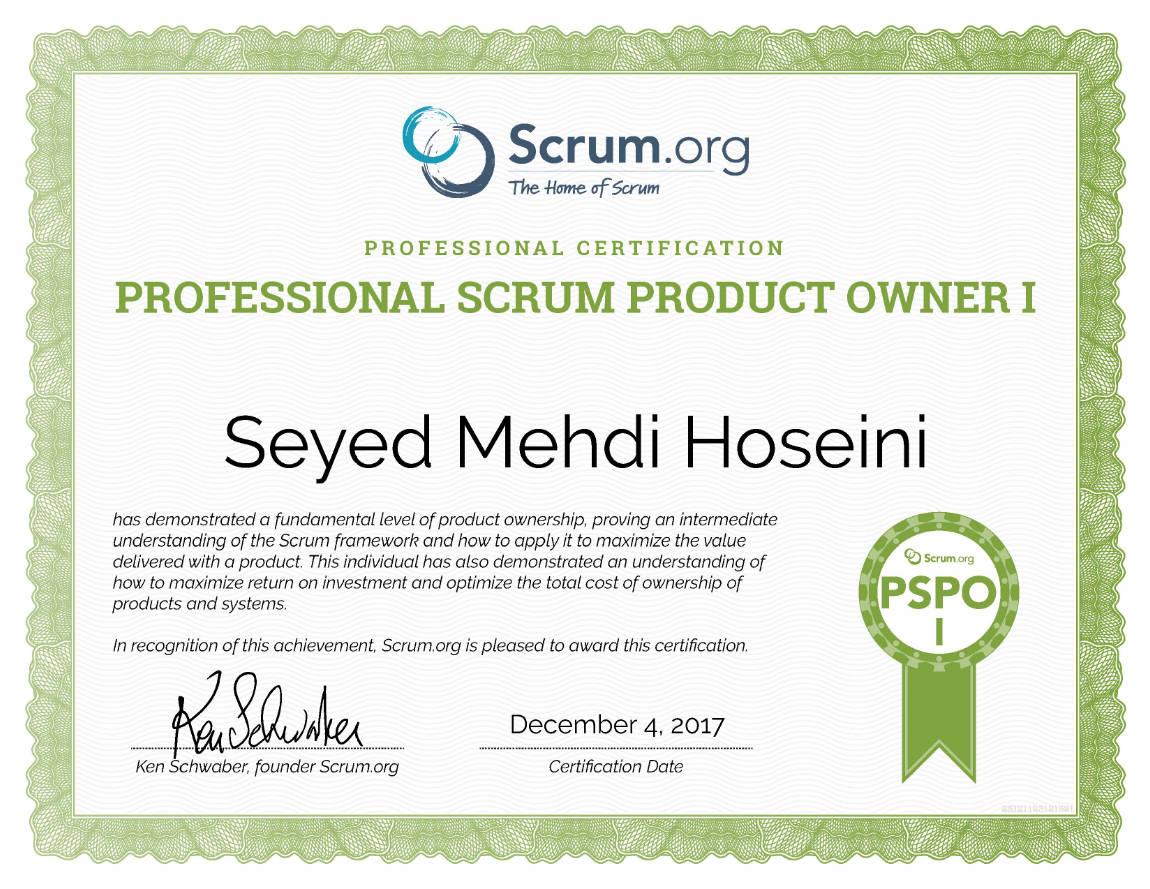PSPO I exam is a little bit expensive, so we have provided a guide for the candidates to prepare, practice and pass it with more confidence.

Scrum.org exams and in this case PSPO I exam are challenging and a little bit expensive. So people want to know how they can pass these exams with more confidence. Therefore, we have decided to prepare a series of preparation guides for the Scrum.org exams.
Each guide contains minimum mandatory actions that should be done for passing the exam in a suitable timeframe.
In this post, we will introduce the PSPO I exam (Professional Scrum Product Owner) step by step preparation guide as follows:
Books and Materials
- Read “The Scrum Guide” carefully
- “The Professional Product Owner: Leveraging Scrum as a Competitive Advantage” by Don McGreal and Ralph Jocham
- “Agile Estimating and Planning” by Mike Cohn
- “User Stories Applied: For Agile Software Development” by Mike Cohn
- “Scrum Insights for Practitioners: The Scrum Guide Companion” by Hiren Doshi
- Scrum Glossary
Assessments and Practices
- Practice Scrum Open assessment many times until you could be able to pass the exam with a 100% score in 10 minutes.
- Practice Product Owner Open assessment many times until you could be able to pass the exam with a 100% score in 10 minutes.
- Finally, use elearning.scrumschool.org PSPO I exam tips and tricks training manual. It provides high-quality, deep, and tricky content that could be used as a reliable learning source that will help you pass the real exam with more confidence.
Also, there are a lot of complementary books that you can find in this link for the PSPO I exam.
Related posts:
1-Preparation guide for the PSM I exam (Professional Scrum Master)
2-Preparation guide for the PSD I exam (Professional Scrum Developer)
3-Preparation guide for the PSM II exam (Professional Scrum Master II)
4- Preparation guide for the PSM III exam (Professional Scrum Master III)
5- Preparation guide for the PAL I exam (Professional Agile Leadership I)
6- Preparation guide for the PSK I exam (Professional Scrum with Kanban I)
